Our Peach Blueberry Crostata is easy to make using our fool-proof tart dough recipe.
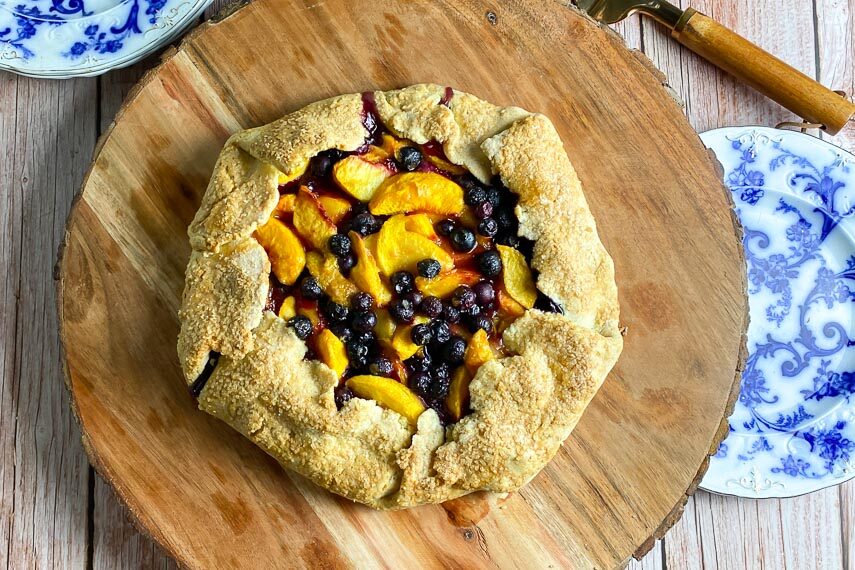
Beyond The Low FODMAP Diet Elimination Phase
The low FODMAP diet has 3 phases: Elimination, Challenge and Integration. Many folks – even doctors – use the terminology incorrectly and use the phrase “low FODMAP diet” when what they are really referring to is the initial brief Elimination Phase.
It is vital for your gut health, and for your healthy relationship with food, to move beyond this first restrictive step. It is during the Challenge Phase that you will learn what your personal relationship is to various foods, FODMAPs and serving sizes.
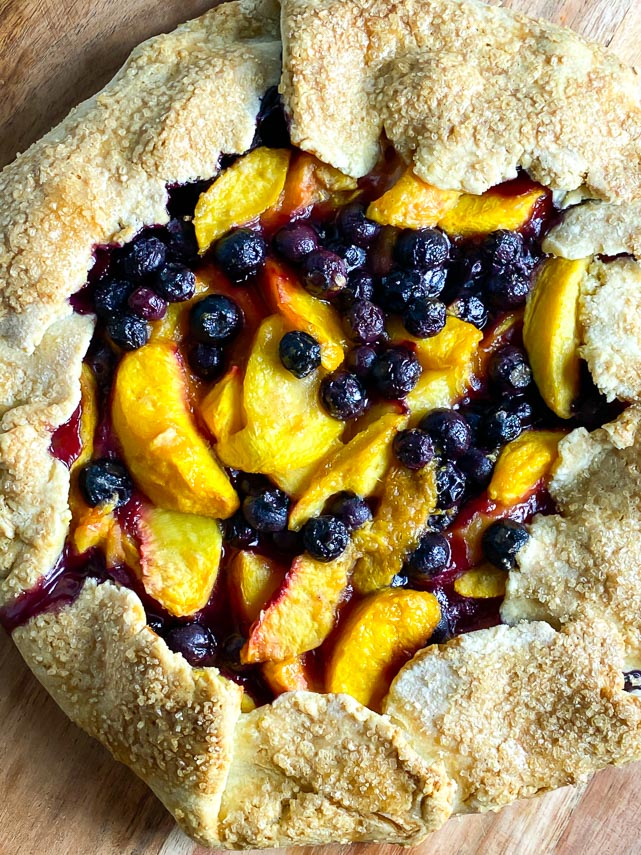
Yellow peaches contain Polyols – specifically sorbitol – according to Monash University lab testing. Yellow peaches are low FODMAP in 30 g amounts. When you test Polyols you will discover just how much Polyol content you can tolerate and will hopefully divide your Challenges into testing yourself for tolerance to sorbitol as well as mannitol.
For those of you with Irritable Bowel Syndrome (IBS) who are following the low FODMAP diet Monash University has lab tested yellow peaches and they have a 30 g low FODMAP serving size. The serving size of this tart contains more than that, so we recommend this recipe for those who have passed their Polyol Challenge – that’s what the “P” icon represents, above. (You could also serve much smaller wedges).
We know if can sound confusing and we strongly suggest doing your Challenges with a Registered Dietitian to help guide you.
This Recipe Is For You If You Have Passed Your Sorbitol Challenge
This recipe contains a fair amount of yellow peaches and we suggest it for those who have passed their Challenge for sorbitol.
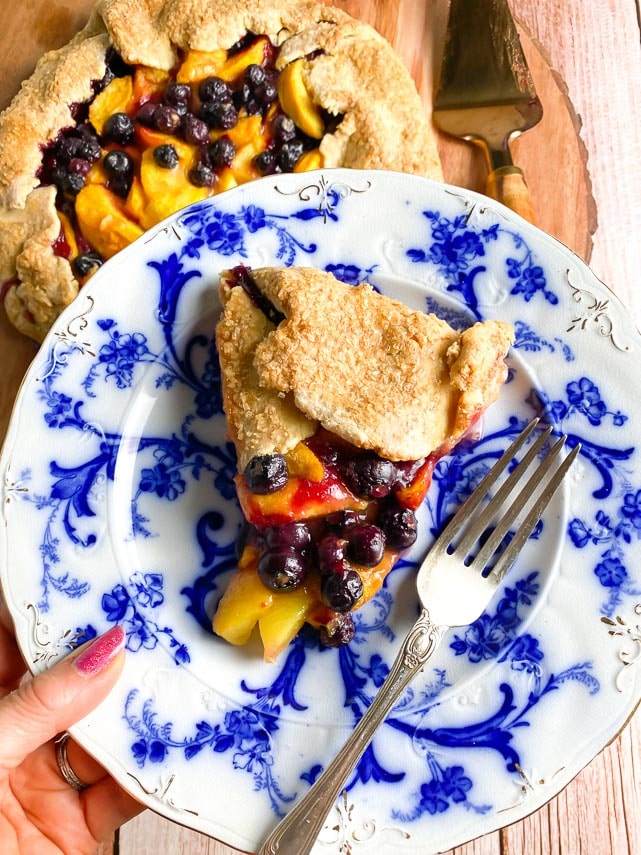
Frequently Asked Questions
FODMAP is an acronym for Fermentable Oligosaccharides, Disaccharides, Monosaccharides and Polyols.
Polyols are small-chain carbohydrates that occur naturally in certain fruits and vegetables and are used as additives in prepared foods. The two Polyols that have been extensively evaluated by the Monash University researcher are sorbitol and mannitol.
Read more in our article, What Are Polyols? Learn All About the “P” in FODMAP!
Monash University has lab tested both white and yellow peaches and reported their findings in their smartphone app. Yellow peaches have a more generous low FODMAP serving size, so we used them in this recipe.
You can read more in our article, Explore An Ingredient: Peaches.
Many recipes will suggest peeling peaches by dropping them into a pot of boiling water for a minute or two, then you slip off the skins, which loosen during the blanching. While this is a very effective technique, and one we use from time to time, I prefer to use a sharp vegetable peeler to peel the peaches for this recipe. Blanching leaves peaches quite moist, with extra water clinging, and too much moisture in this recipe will wreak havoc with the tart dough, which you want to keep crisp.
You can see one of my fragrant, ripe peaches below in the process of being peeled with a sharp hand-held peeler.
Monash University testing tells us that a heaping ¼ cup or 40 g of blueberries are low FODMAP. The amount of blueberries used in this tart is low FODMAP.
If you are a pie baker, we hope you have found our All-Butter Pie Dough, which is one of our very favorite low FODMAP basic recipes. This recipe is similar to our pie dough, but with slightly different ingredients and a different preparation technique.
Tarts, formed in tart pans or within tart rings, eventually have to be sturdy enough to be freestanding. Same thing with a crostata – there is no pie pan supporting the dough. Because of these needs, our crostata and tart dough is a bit sturdier than our pie crust. This tart dough recipe has some extra xanthan gum to help it be as easy-to-work-with as it is. I do not consider it optional.
The crostata/tart crust is very easy to make and has a wonderful flavor. Make sure you have it prepped and ready to go.
To keep the bottom of the crostata crust extra crisp, I often use a layer of toasted almonds scattered about, under the juicy fruit filling. They help absorb moisture and add a little crunch, but the crostata does work without them.
If you are using the almonds, I like accentuating the flavor with a couple of drops of pure almond extract to the fruit filling. Again, purely optional.
The low FODMAP diet is not a dairy-free diet. Heavy cream in small amounts is low FODMAP, as it is more fat than carbohydrate.
Read more in our article, All About Cream & FODMAPs. That article explains FODMAP content of various types of cream and also discusses differences in terminology between US, Australia and the UK, so that you can always use the type of cream called for in a recipe.
We have a deep-dive article, Explore An Ingredient: Sugar, which we suggest you read. Briefly stated, demerara sugar is a coarse ground sugar that is somewhat less processed than white sugar. It is beige in color with large crystals and offers sparkle and crunch. It also goes by “raw sugar”, “turbinado” and “Sugar In The Raw”.
More Low FODMAP Peach & Tart Recipes
We have about 1000 recipes and counting. Here are our favorite peach and tart recipes. All low FODMAP, of course.
- Rhubarb Raspberry Crostata
- Grilled Peach & Tomato Salsa
- Peaches & Cream Popsicles
- Peach Iced Tea
- Peach & Ginger Dutch Baby
- Duck Breasts With Peaches
- Fresh Strawberry Tart
- Chocolate Caramel Tart
- Rhubarb Cheesecake Tart
- Fresh Grape Tart With Brown Sugar & Sour Cream Custard
- Cinnamon Pecan Truffle Tart
- Strawberry Rose Tart
- Lemon Tart
How To Make Low FODMAP Peach Blueberry Crostata
Position rack in upper third of oven. Preheat oven to 425°F (220°C). Have a half-sheet pan ready to use.
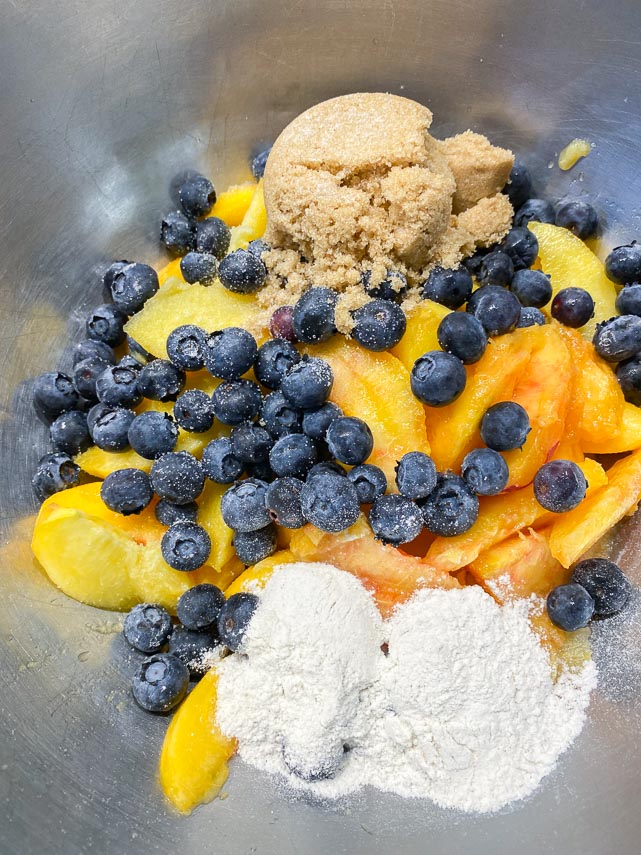
In a mixing bowl, stir together the peaches, blueberries, brown sugar, flour, cinnamon and salt until well combined. Stir in almond extract, if using. Allow to sit while oven preheats, and you attend to the dough.
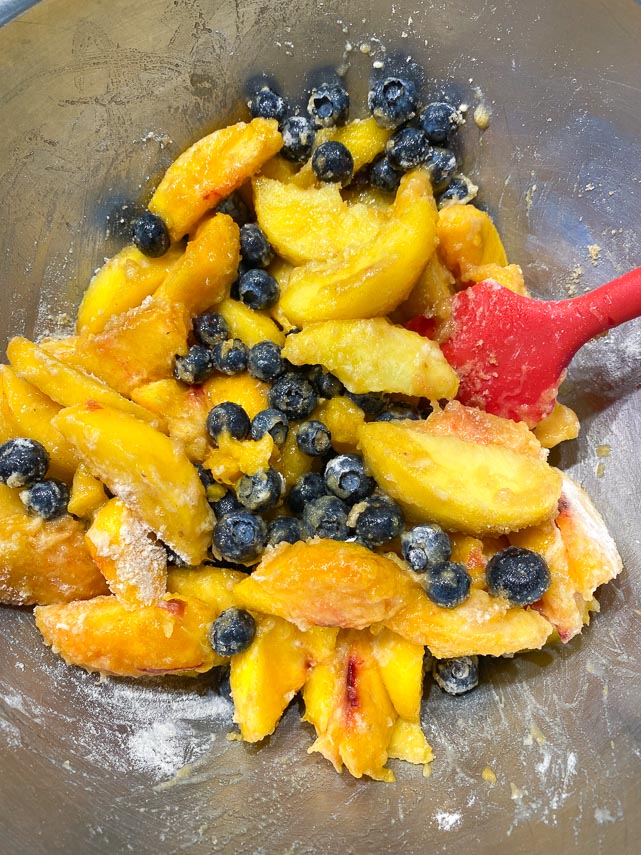
Have Crostata & Tart Crust ready to roll out. Cut a piece of parchment paper to fit the half-sheet pan. Dust paper lightly with flour and roll out tart dough to about 15-inches (38 cm) around (it will overlap the height of the parchment paper).
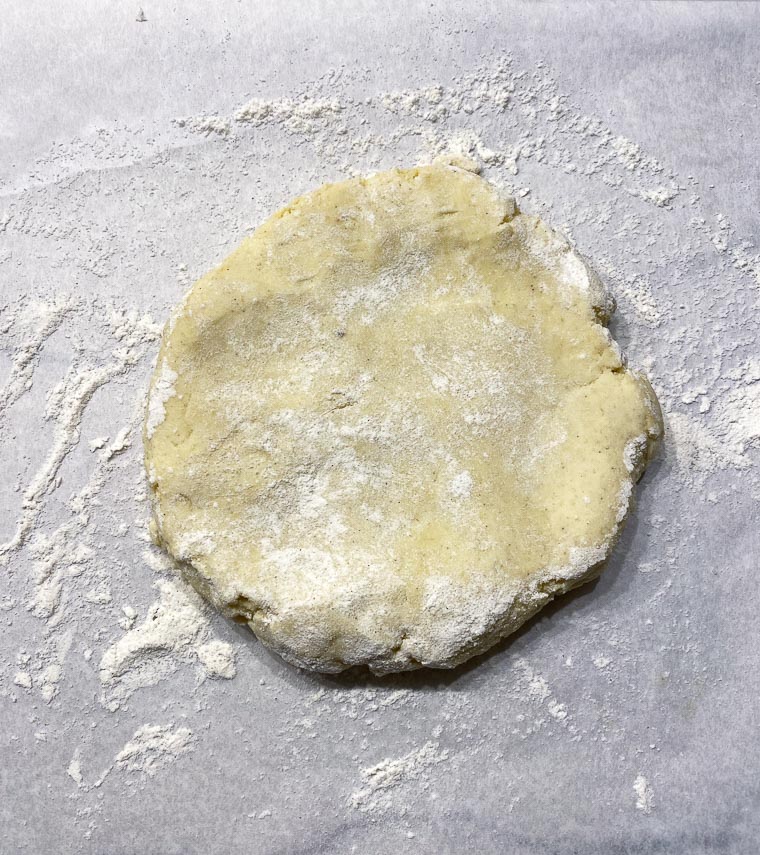
Sprinkle almonds over center of dough, if using.
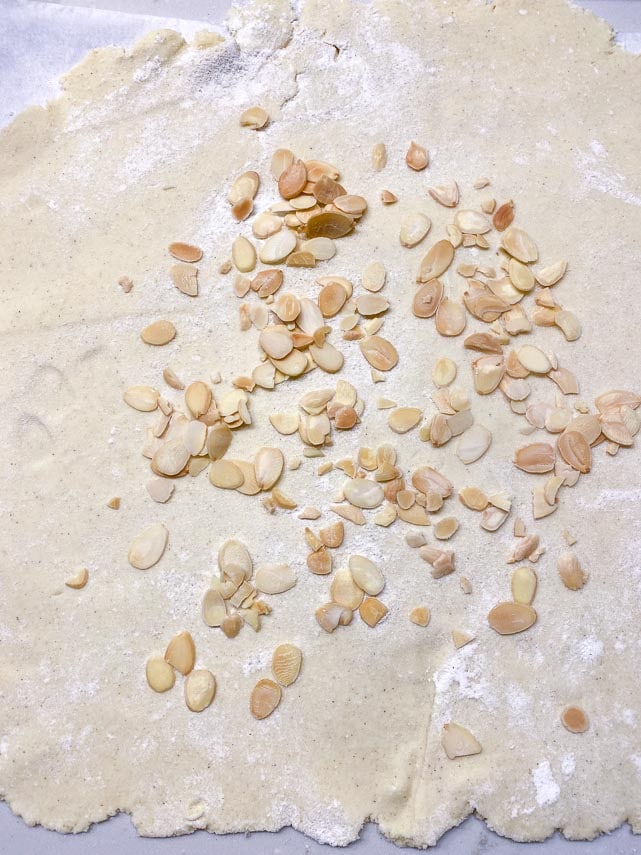
Scrape fruit mixture with any juice onto center of dough (over almonds, if used). Spread out a bit but leave a wide border about 4-inch (10 cm) all around.
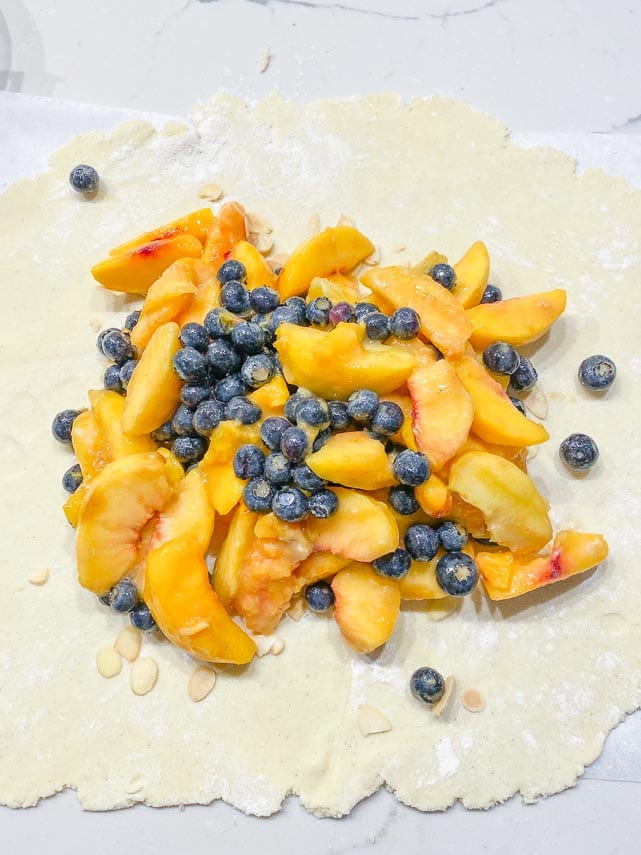
Using images to help guide you, flip the edges of the dough up and over the filling, leaving the center open.
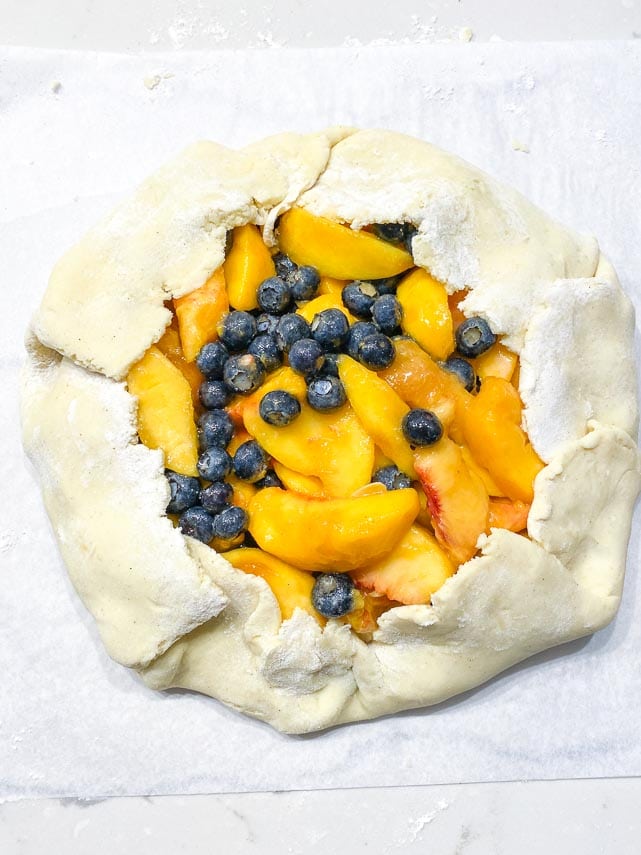
Slip parchment onto a half-sheet pan. Brush dough with cream and sprinkle with demerara sugar.
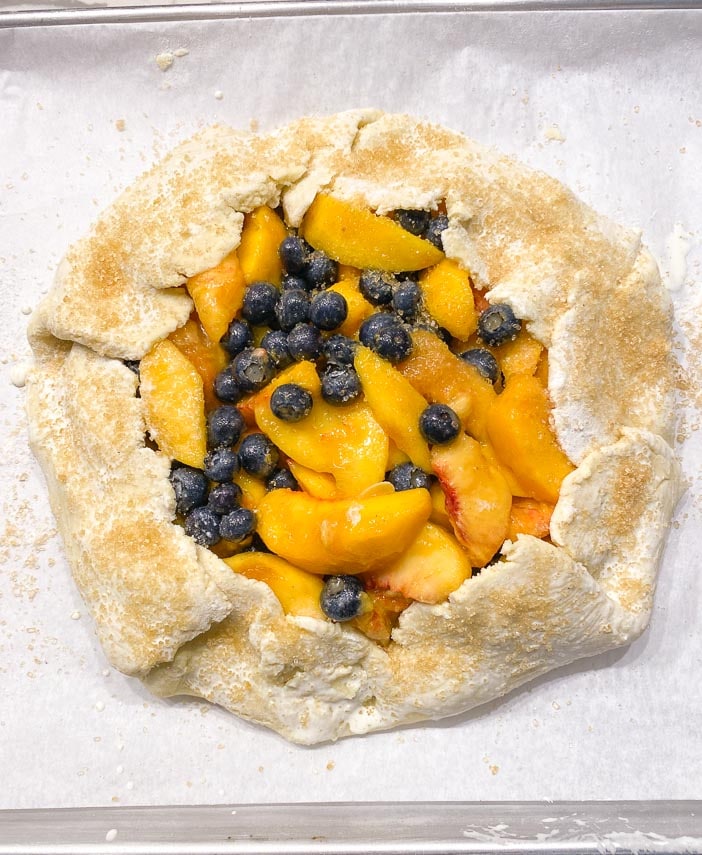
Place in oven and bake for 5 minutes, then turn oven down to 350°F 180°C) and continue to bake for about 40 to 50 minutes or until pastry is golden brown. Rotate pan at least once during baking time. Cool pan on rack for 10 minutes.
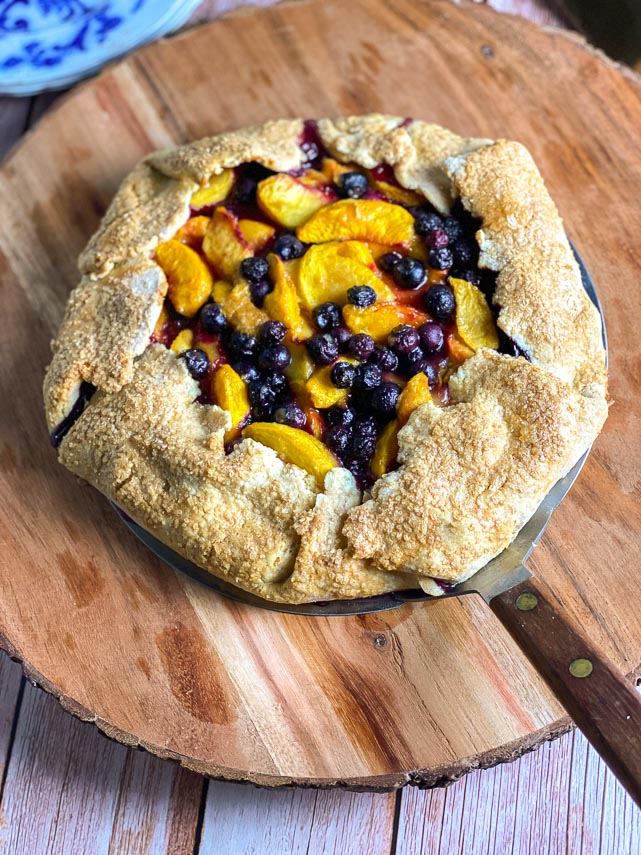
Serve crostata warm or at room temperature. Crostata is best served the day it is made. A dollop of whipped cream, vanilla ice cream or yogurt is a nice addition.
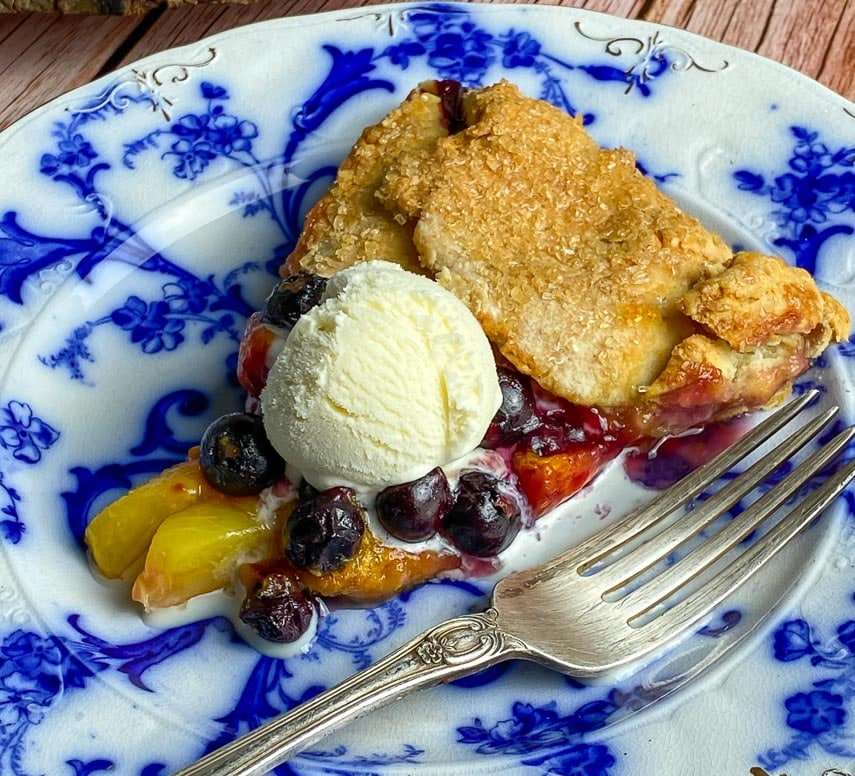
FODMAP Information
Our recipes are based on Monash University and FODMAP Friendly science.
- Almonds: Both Monash University and FODMAP Friendly have lab tested whole almonds, and their results vary from one another. Monash says that a Green Light low FODMAP portion is 10 whole almonds at 12 g, but a high FODMAP portion is 20 whole almonds at 24 g. FODMAP Friendly gives them a “Pass” at 30 g or ¼ cup.
- Blueberries: Blueberries have been lab tested by both Monash University and FODMAP Friendly. FODMAP Friendly gives them a “Pass” at 1 cup or 150 g. Monash states that a Green Light low FODMAP serving is a heaping ¼ cup or 40 g. In their tests the fruit jumped to Moderate FODMAP levels quickly at ⅓ cup or 50 g.
- Butter: Both Monash University and FODMAP Friendly have lab tested butter. Monash states that a low FODMAP Green Light portion is 1 tablespoon or 19 g and also states that “butter is high in fat and does not contain carbohydrates (FODMAPs)”. FODMAP Friendly gives it a “Pass” at 1 tablespoon or 19 g. Both recommended serving sizes are presented as part of healthy eating guidelines, not as maximum FODMAP serving size. Fat can affect guy motility and trigger IBS symptoms in some people. Eat to your tolerance.
- Sugar: Monash University and FODMAP Friendly have both lab tested white, granulated sugar. Monash states that a Green Light low FODMAP serving size of white sugar is ¼ cup (50 g). FODMAP Friendly simply states that they have tested 1 tablespoon and that it is low FODMAP. Regular granulated white sugar is sucrose, which is a disaccharide made up of equal parts glucose and fructose. Sucrose is broken down and absorbed efficiently in the small intestine.
Please always refer to the Monash University & FODMAP Friendly smartphone apps for the most up-to-date lab tested information. As always, your tolerance is what counts; please eat accordingly. The ultimate goal of the low FODMAP diet is to eat as broadly as possible, without triggering symptoms, for the healthiest microbiome.
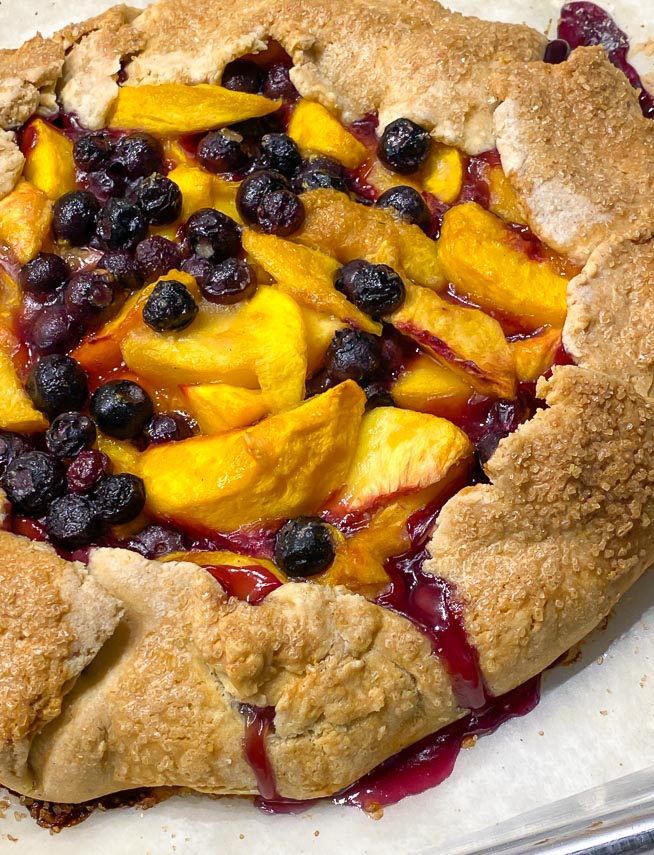
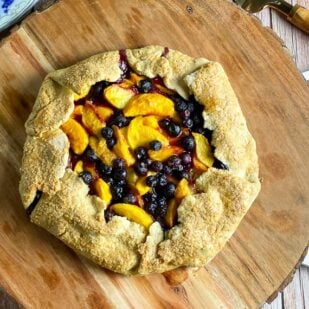
Low FODMAP Peach Blueberry Crostata
Our Low FODMAP Peach Blueberry Crostata is easy to make using our fool-proof tart dough recipe. Monash has lab tested yellow peaches and they have a 30 g low FODMAP serving size. The serving size of this tart contains more than that, so we recommend this recipe for those who have passed their Polyol Challenge. (You could also serve much smaller wedges).
Ingredients:
- 1 ½- pounds (680 g) ripe yellow peaches, peeled, pitted, and cut into ½-inch (12 mm) wedges
- 1 cup (148 g) fresh blueberries, washed and dried
- ¼ cup (54 g) firmly packed light brown sugar
- 2 tablespoons low FODMAP gluten-free all-purpose flour, such as Bob’s Red Mill 1 to 1 Gluten Free Baking Flour
- ¼ teaspoon cinnamon
- Pinch salt
- A couple of drops of almond extract; optional
- 1 batch Crostata & Tart Crust, prepared and ready to roll
- ¼ cup (22 g) toasted sliced almonds, blanched or natural; optional
- 1 tablespoon heavy cream
- 2 tablespoons demerara or raw sugar
Preparation:
-
Position rack in upper third of oven. Preheat oven to 425°F (220°C). Have a half-sheet pan ready to use.
-
In a mixing bowl, stir together the peaches, blueberries, brown sugar, flour, cinnamon and salt until well combined. Stir in almond extract, if using. Allow to sit while oven preheats, and you attend to the dough.
-
Have Crostata & Tart Crust ready to roll out. Cut a piece of parchment paper to fit the half-sheet pan. Dust paper lightly with flour and roll out tart dough to about 15-inches (38 cm) around (it will overlap the height of the parchment paper). Sprinkle almonds over center of dough, if using.
-
Scrape fruit mixture with any juice onto center of dough (over almonds, if used). Spread out a bit but leave a wide border about 4-inch (10 cm) all around. Using images to help guide you, flip the edges of the dough up and over the filling, leaving the center open. Slip parchment onto a half-sheet pan. Brush dough with cream and sprinkle with demerara sugar.
-
Place in oven and bake for 5 minutes, then turn oven down to 350°F 180°C) and continue to bake for about 40 to 50 minutes or until pastry is golden brown. Rotate pan at least once during baking time. Cool pan on rack for 10 minutes. Serve crostata warm or at room temperature. Crostata is best served the day it is made. A dollop of whipped cream, vanilla ice cream or yogurt is a nice addition.
Notes:
FODMAP Information
Our recipes are based on Monash University and FODMAP Friendly science.
• Almonds: Both Monash University and FODMAP Friendly have lab tested whole almonds, and their results vary from one another. Monash says that a Green Light low FODMAP portion is 10 whole almonds at 12 g, but a high FODMAP portion is 20 whole almonds at 24 g. FODMAP Friendly gives them a “Pass” at 30 g or ¼ cup.
• Blueberries: Blueberries have been lab tested by both Monash University and FODMAP Friendly. FODMAP Friendly gives them a “Pass” at 1 cup or 150 g. Monash states that a Green Light low FODMAP serving is a heaping ¼ cup or 40 g. In their tests the fruit jumped to Moderate FODMAP levels quickly at ⅓ cup or 50 g.
• Butter: Both Monash University and FODMAP Friendly have lab tested butter. Monash states that a low FODMAP Green Light portion is 1 tablespoon or 19 g and also states that “butter is high in fat and does not contain carbohydrates (FODMAPs)”. FODMAP Friendly gives it a “Pass” at 1 tablespoon or 19 g. Both recommended serving sizes are presented as part of healthy eating guidelines, not as maximum FODMAP serving size. Fat can affect guy motility and trigger IBS symptoms in some people. Eat to your tolerance.
• Sugar: Monash University and FODMAP Friendly have both lab tested white, granulated sugar. Monash states that a Green Light low FODMAP serving size of white sugar is ¼ cup (50 g). FODMAP Friendly simply states that they have tested 1 tablespoon and that it is low FODMAP. Regular granulated white sugar is sucrose, which is a disaccharide made up of equal parts glucose and fructose. Sucrose is broken down and absorbed efficiently in the small intestine.
Please always refer to the Monash University & FODMAP Friendly smartphone apps for the most up-to-date lab tested information. As always, your tolerance is what counts; please eat accordingly. The ultimate goal of the low FODMAP diet is to eat as broadly as possible, without triggering symptoms, for the healthiest microbiome.
Nutrition
All nutritional information is based on third-party calculations and should be considered estimates. Actual nutritional content will vary with brands used, measuring methods, portion sizes and more. For a more detailed explanation, please read our article Understanding The Nutrition Panel Within Our Recipes.
For more blueberry inspiration, check out our round-up of many of our favorite blueberry recipes.
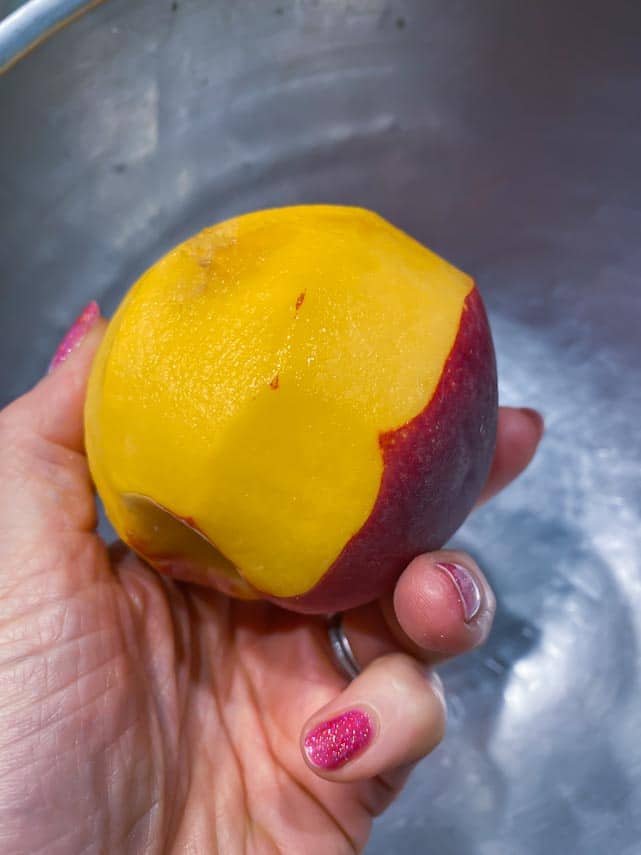

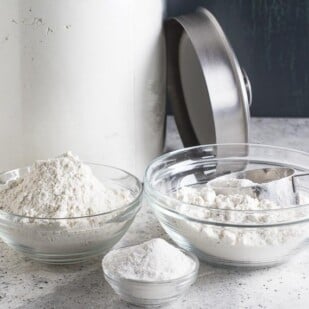






I love this recipe! Blueberries are my favorite and it is always good to know a dessert is good for me. 😉
Well Ben you know that dessert equals happiness so it follows that dessert is good for us! Thanks for 5 stars Ben. 🙂